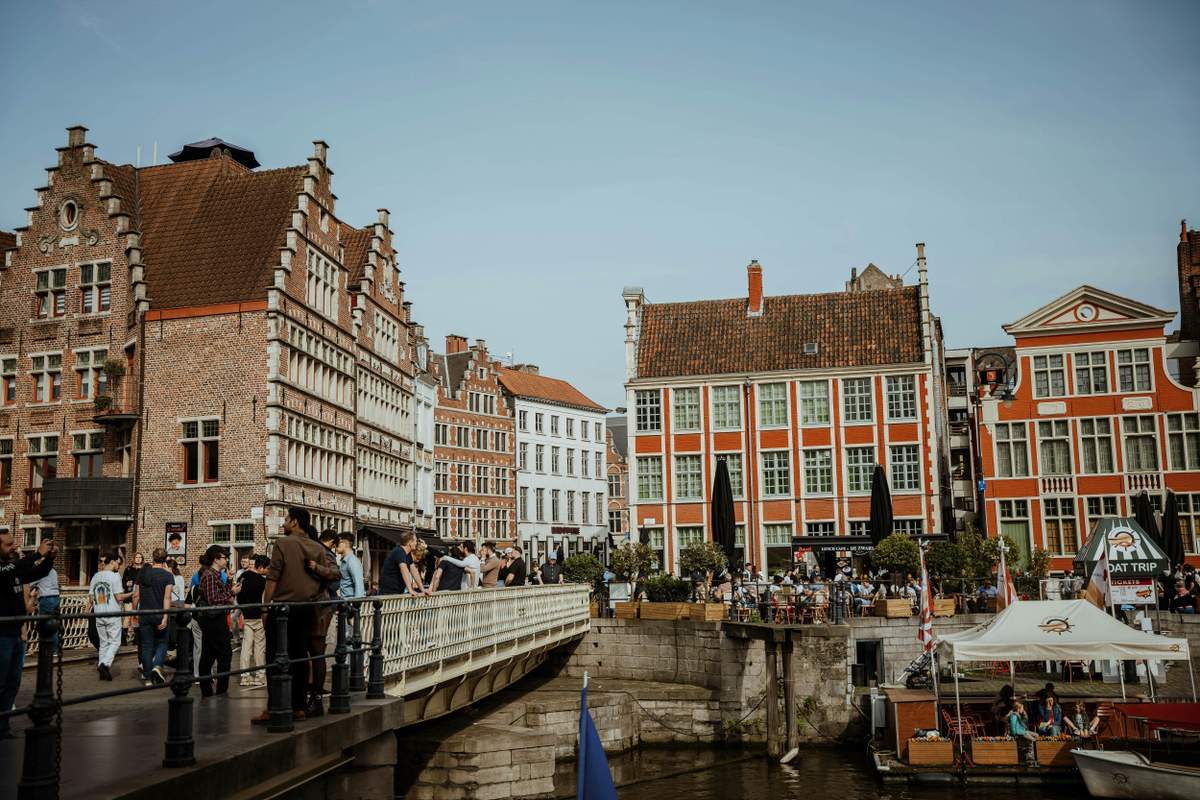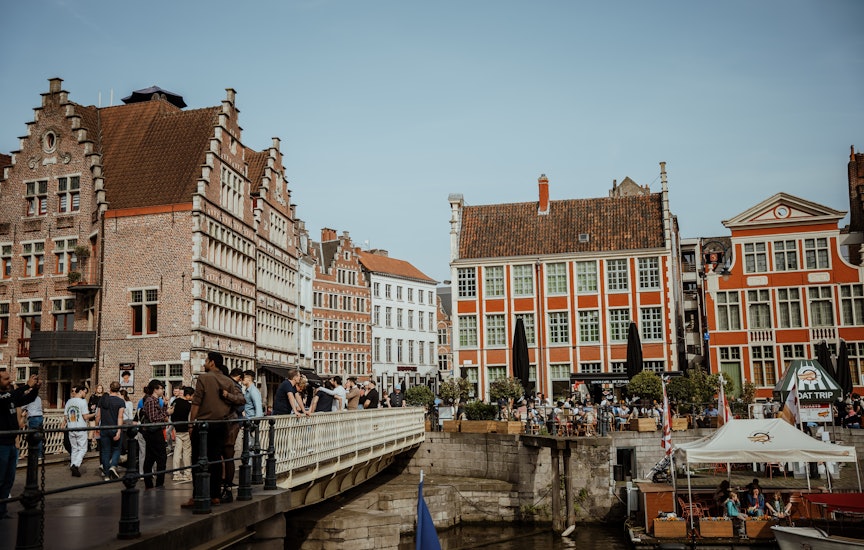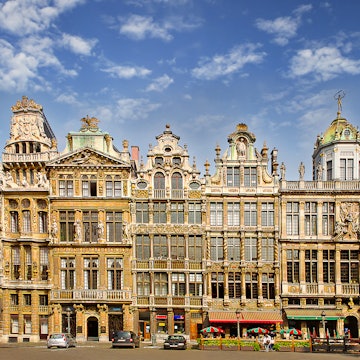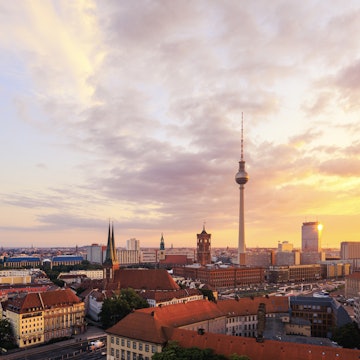

Plan your menu when in Belgium with this guide to the country's top flavors and where to try them © Kirk Fisher/ Shutterstock
With waffles, fries, chocolate and beer as its staples, Belgian cuisine is among the most beloved around the world — even if its origins are not particularly well-known.
Here are some foods and drinks you should sample on a visit to Belgium and the best places to try them.

Feast on Belgian chocolate
Belgium produces some of the world’s best chocolate. And with over 2000 chocolate shops across the country, you’ll find something you like wherever you go.
Top Belgian chocolate brands include Neuhaus, Godiva, Guylian, Leonidas and Pierre Marcolini. And if you’re interested in the story behind the irresistible sweets, head to Chocolate Nation in Antwerp – which calls itself “the world’s largest Belgian chocolate museum” – or Choco-Story, a museum open seven days a week, with locations in Bruges and Brussels.
While you could simply buy a bar of chocolate, you’d be remiss if you didn’t treat yourself to a box of pralines. They were invented in 1857 in Brussels and have been perfected all over the country ever since.
Where to try it: In cities like Brussels and Bruges, you’ll find chocolate everywhere you look. Some of the best chocolatiers across the country are Van Dender in Brussels (known for its hot chocolate), Pierre Plas in Bastogne (known for its unique praline designs) and the Chocolate Line in Bruges and Antwerp (known for collaborating with big-name restaurants like the Fat Duck and Noma).
Ready to plan your trip to Belgium? Here's our guide to the best places to visit

Taste mussels by the seaside
Mussels are common in the Belgian stretch of the North Sea. They’re so popular that moules-frites — mussels prepared in a rich sauce of white wine, shallots, parsley and butter, served with fries — are often named Belgium’s national dish.
Every restaurant in major inland cities claims they have the best moules-frites, but to find the freshest and tastiest mussels, head to seaside resort Ostend, where restaurant owners buy their mussels straight from the fishers.
Where to try it: Apero Fish Palace makes a mean moules-frites alongside other delicious seafood dishes. And if you’re looking for something special, La Moulinière has over 40 mussel dishes on the menu — try the mussels à l’Ostendaise, served with gray shrimp, wine and bisque.
Eat fries in a typical frituur
Fries come in many shapes and forms around the world. But no country does fries quite like Belgium. As any local will tell you, the only place to get real Belgian fries is a frituur.
Roughly translated to "fry shop," frituurs range from simple mobile food trucks to small restaurants with full kitchens and a well-stocked counter with meaty and cheesy snacks, such as the popular frikandel: a deep-fried skinless sausage.
The most beautiful part of the frituur is that they’re for everyone. You might queue up alongside the prime minister, a dockworker, a teacher and a police officer. Many people don’t stray from their favorite order, while others tend to change it up with every visit.
Where to try it: With over 4600 frituurs across the country, it can be difficult to choose one. The most authentic ones are hidden away in residential neighborhoods, but places like Frit Flagey (Ixelles), De Frietketel (Ghent) and Frites Atelier (Antwerp, Brussels, Ghent) often top the "Best of" lists.
Traveling Belgium on a budget? Here's our money-saving guide
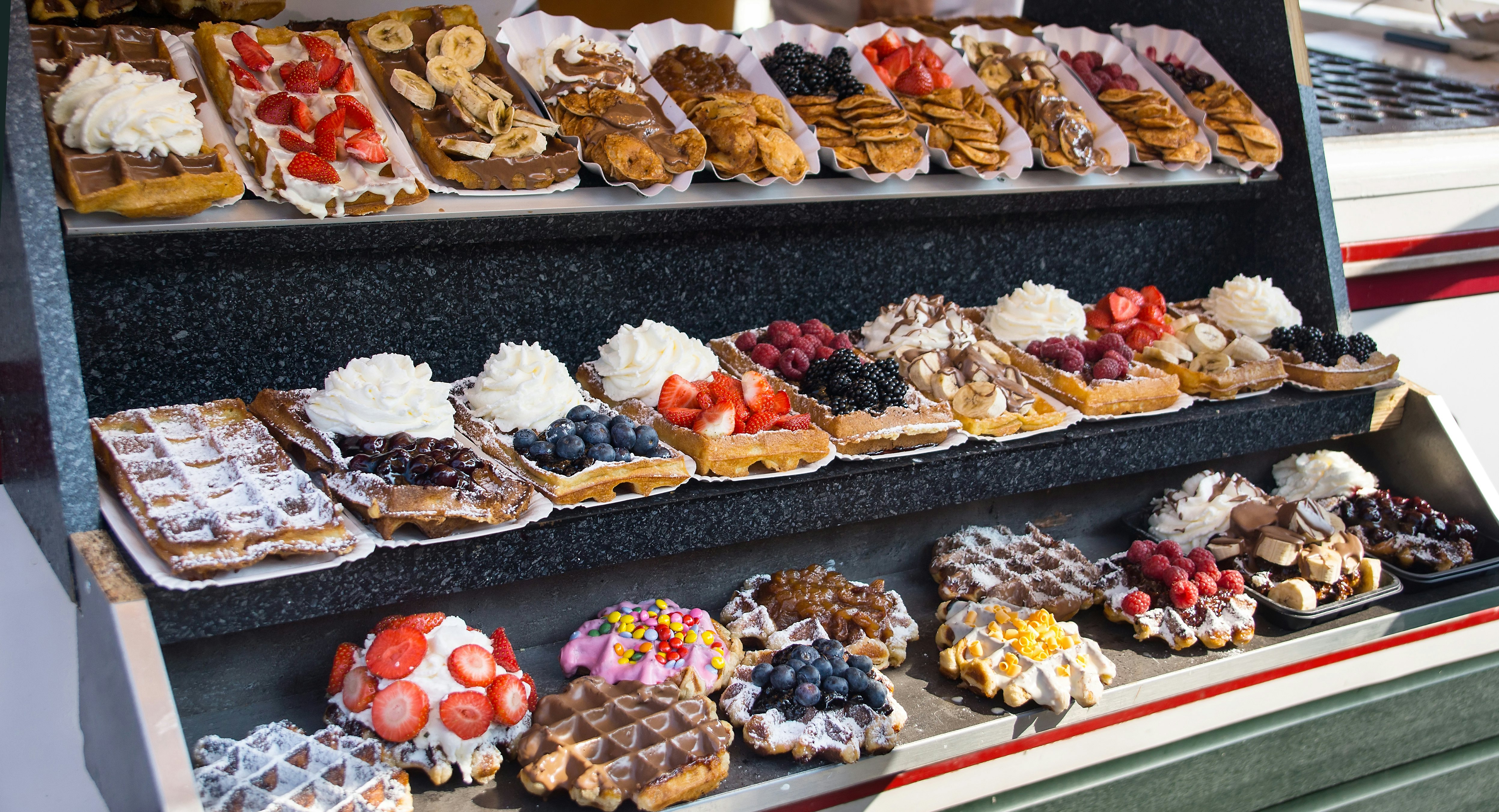
Get your sweet fix with Belgian waffles
In Belgium, an age-old waffle dilemma looms. For years, two cities – Liège and Brussels – have fought for the "Belgian waffle" title.
The Brussels waffle is the one most people know: airy, crispy, with a hint of vanilla and served with toppings galore. But what many travelers don't know is that there’s another version of the Belgian waffle. Liège waffles are made from a denser brioche-like dough with caramelized pearl sugar. Enjoy the sweet treat as is – no extra toppings.
For me, there’s only one correct answer in the waffle debate: the Liège version will always have a special place in my heart. Every time I have one, it reminds me of summertime by the beach with my grandparents.
But honestly, there really are no losers when it comes to something like this. Whichever version of the decadent sweet treat you prefer, each bite is an example of the country’s mastery in waffle making.
Where to try it: You can find great waffles at tearooms, waffle shops and food carts, particularly in — you guessed it — Brussels (at Gaufres & Waffles or Maison Dandoy) and Liège (at Sandwicherie Pollux or Pâtisserie Eggenols). Remember, no toppings on your Liège waffles.
Discover stoemp, a little-known local favorite
Stoemp is the Belgian version of mash, consisting of mashed potatoes, milk, butter and vegetables like onion, leeks, carrots and cabbage. It’s at the heart of many Belgian dinner tables, although it usually stays under the radar among visitors.
Beloved by people of all ages in Belgium for its simplicity, creaminess and gentle flavor, stoemp is a side dish well worth ordering.
Where to try it: While stoemp is on the menu at many restaurants in Belgium, Balls & Glory has made it a staple dish. With locations in Antwerp, Ghent, Leuven and Sint-Niklaas, it pairs different kinds of stoemp with a modern take on the classic filled meatball and a luscious gravy.

Have a traditional Flemish beef stew
Every country has a staple stew. In Belgium, that’s stoofvlees; in French-speaking Wallonia, it’s called carbonade flamande.
Whatever the name, the delectably rich stew is slow-cooked in one pot with beef, onion, Belgian beer and bread. Stoofvlees is served with fries or, less commonly, with mashed potatoes.
The real beauty of this dish is that there’s no official recipe. Everyone in Flanders believes their grandma makes the best — whether they add juniper berries, prunes, gingerbread, brown sugar, red currant jelly or all/none of the above.
Where to try it: Since stoofvlees is a homemade type of meal, you don’t have to go to a fancy restaurant to find the best. At ‘t Bagientje in Bruges, you’ll find delicious stoofvlees prepared with local beer Brugse Zot.
Be inspired to explore more with our guide to the best things to do in Belgium
Savor the elegant simplicity of Belgian endive
There’s no country where people love endive (witloof in Dutch) as much as Belgium. Still, due to its mildly bitter taste, endive is a polarizing dish among young children — they either hate it or they love it.
In Belgium, endive can be eaten raw as a substitute for other leafy greens, cooked, braised and, most commonly, rolled in ham and oven-roasted with béchamel sauce.
Where to try it: Oven-roasted endive is frequently eaten in Flemish homes. But you’ll also find it on the menu of some traditional brasseries, mostly in Antwerp. Head to De Bomma or the Bistro for the best.
Sample Belgian beers at a traditional brown cafe
Belgian beer culture is a state of mind. It’s so ingrained in the country’s diet and social life it was added to the UNESCO Intangible Cultural Heritage List in 2016. In other words, it’d be a shame to come to Belgium and not sample some of the best beers the world has ever produced.
Whether you’re into pilsners, strong blonde beer, Trappist beer, Oude Geuze or lambic, grab a pint and enjoy. Just remember to take it easy: Belgian beer might be stronger than what you’re used to drinking.
Where to try it: In Belgium, beer is everywhere. Find a traditional "brown cafe," famed for its soulful ambiance and mismatched decor, like Café Merlo in Brussels or ‘t Poatersgat in Bruges, and pick your poison.
Vegetarians and vegans, don’t panic
Although Belgium was a bit late to the meat-free party, vegetarians and vegans won’t have any trouble finding something to their liking here.
Belgian cuisine is usually quite heavy on meat, but you’ll find that most restaurants in the country have at least a few vegetarian or vegan options today.
Check out the range of plant-based restaurants like HUMM in Antwerp (the mezze are to die for), Le Botaniste in Ghent and Brussels (finish with an omega 3 brownie) and Savage in Brussels (known for its constantly evolving plant-based menu).






